Sensoji Temple: Tokyo’s Beating Heart of Tradition and Spirituality
Standing proudly in Asakusa, Sensoji Temple (浅草寺) isn’t just Tokyo’s oldest Buddhist temple—it’s a living time capsule where the past and present collide. Founded in 628 AD after two fishermen discovered a golden statue of Kannon (Goddess of Mercy) in the nearby Sumida River, this sprawling complex has survived fires, wars, and modernization to remain the city’s spiritual anchor. The moment you pass through Kaminarimon (Thunder Gate), with its colossal red lantern and statues of the wind and thunder gods, you’re transported into old Edo. The Nakamise-dori shopping street, lined with stalls selling handmade ningyo-yaki (doll-shaped cakes) and vintage kimono fabrics, buzzes with energy, while the temple’s main hall hums with the murmured prayers of visitors rubbing incense smoke over their bodies for purification. What makes Sensoji special isn’t just its history—it’s the way salarymen in suits bow beside kimono-clad elders, where Instagram influencers pause mid-shot to clap twice for the gods, and where the scent of burning senko (incense sticks) blends with the distant hum of Tokyo Skytree’s elevators.
Why Sensoji is Tokyo’s Unmissable Landmark
In a city obsessed with neon and speed, Sensoji offers something rare: a place to breathe. Unlike manicured shrines or silent museums, this temple thrums with life—fortune-tellers (omikuji) shake metal cans filled with numbered sticks, warning of “bad luck” that visitors promptly tie to racks so the wind carries away their misfortunes. The temple’s five-story pagoda, reconstructed in 1973, glitters at night, its reflection shimmering in the nearby Sumida River like a scene from a ukiyo-e print. But Sensoji’s real magic lies in its accessibility—there’s no hushed reverence here. Kids giggle as they try to toss coins into the offertory box, couples in matching happi coats ring the peace bell, and street performers mimic Edo-era storytellers under the gates. Even the temple’s giant straw sandals (waraji), hung on Kaminarimon’s sides, remind visitors that this is a place of pilgrimage, not just tourism—a tradition dating back to samurai seeking blessings before battle.
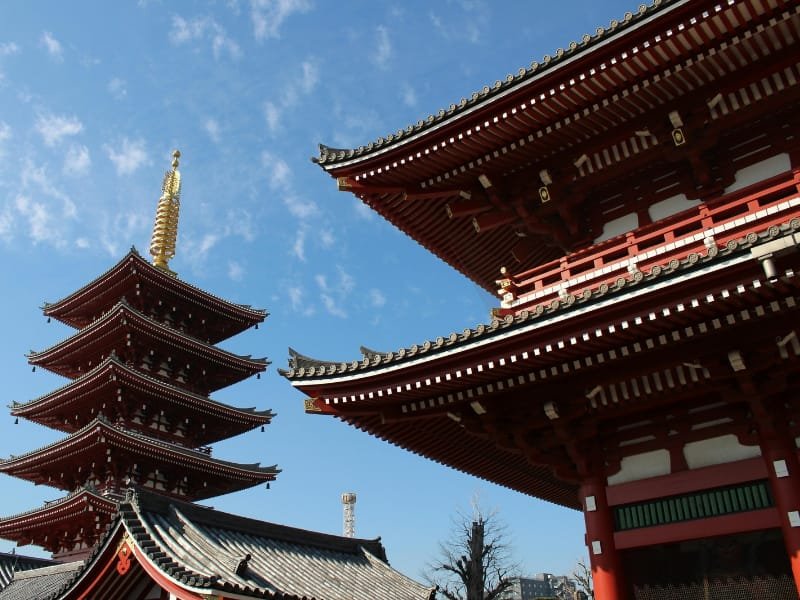
The Cultural Soul of Tokyo: Where Every Ritual Tells a Story
Sensoji isn’t just a relic—it’s a living theater of Japanese spirituality. The temple’s Omikuji (fortune slips) reveal a uniquely Japanese blend of faith and pragmatism: if you draw a bad fortune, you tie it to a metal rack so the gods dissolve your bad luck. If you get a good one, you fold it carefully into your wallet—a charm for financial luck. The Hozomon (Treasure House Gate) guards not gold but 1,000-year-old sutras, while the temple’s main hall (Hondō) enshrines the original Kannon statue—so sacred it’s never shown to the public. At dawn, monks chant beneath paper lanterns bearing donors’ names, while at night, the temple glows under LED recreations of Edo-era lanterns, a perfect marriage of old and new.
But Sensoji’s true power is in its human moments: the elderly woman who’s folded 1,000 paper cranes for her grandson’s health, the tattooed chef praying for his ramen shop’s success, the tourists copying locals by waving incense smoke over their aching shoulders. This is where Tokyo pauses—where the rush of the city fades into the rhythmic clap of hands, the rustle of ema (wish plaques), and the low, resonant ring of the temple bell.
The Divine Discovery: Sensoji’s Mythic Beginnings (645 AD)
The story of Sensoji Temple begins not with architects, but with two humble fishermen—brothers Hinokuma Hamanari and Takenari— casting their nets into the Sumida River in 628 AD. According to legend, their nets kept snagging not fish, but a golden statue of Kannon, the Buddhist goddess of mercy. When they tried to return it to the water, the statue miraculously reappeared in their nets—three times. The village chief, Hajino Nakatomo, recognized this as a divine sign and enshrined the statue in his home, later converting it into a small temple. By 645 AD, the temple had grown into a formal sanctuary under the guidance of Shōkō Shonin, a priest who dreamed that Kannon wished to remain here to “bring salvation to all beings.” This origin story isn’t just folklore; it’s etched into the temple’s DNA. Today, visitors can still see the original fishing spot marked by a stone monument near the Sumida River, where locals leave tiny paper boats (funadama) as offerings for safe voyages. The temple’s hidden inner sanctum, which allegedly holds the never-seen Kannon statue, pulses with an almost tangible energy—pilgrims swear they feel a warm breeze near its doors, even in winter.
Edo’s Spiritual Powerhouse: When Sensoji Became Tokyo’s Beating Heart
By the Edo Period (1603–1868), Sensoji had transformed from a riverside shrine into the cultural epicenter of Tokyo. As the city grew, the temple became a mandatory stop for travelers entering Edo via the Nakasendo highway. Samurai came to pray for victory, merchants sought blessings for wealth, and kabuki actors performed impromptu plays under its gates to entertain pilgrims. The Tokugawa shoguns, recognizing its influence, designated Sensoji as their family’s prayer temple, funding lavish expansions like the five-story pagoda (1648) and the iconic Kaminarimon gate (1651). But Sensoji was never just for elites—it thrived as a people’s temple. The bustling Nakamise-dori market (established 1688) sold everything from medicinal herbs to ninja tools, and the temple’s raucous festivals, like Sanja Matsuri, drew crowds so large they reportedly shook the streets. Even the infamous Yoshiwara pleasure district operated under Sensoji’s tacit blessing, with courtesans praying here for protection. This era’s legacy lives on in the temple’s unwritten rules: the way visitors still toss coins into the offertory box with a clap (a samurai custom to scare off evil spirits), or how shopkeepers along Nakamise-dori use Edo-era sales chants during festivals.
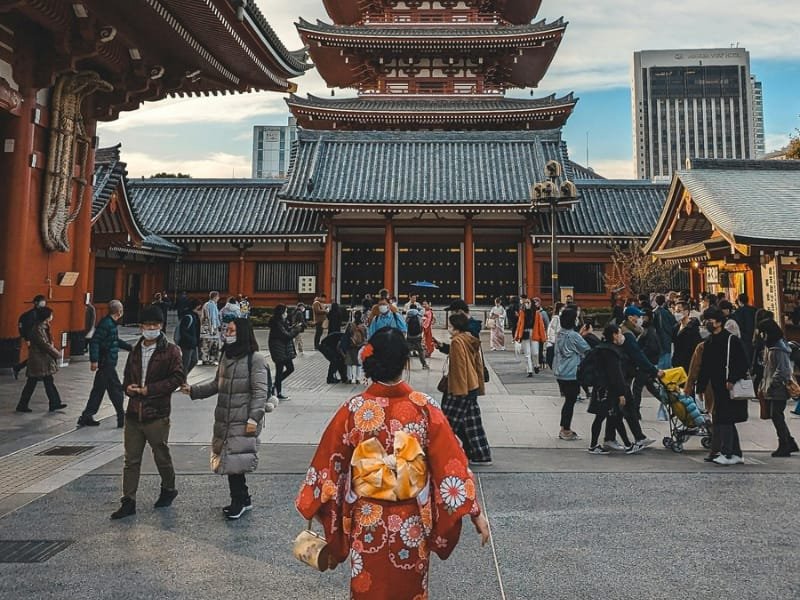
From Ashes to Neon: Sensoji’s Post-War Rebirth
World War II left Sensoji in ruins. The 1945 Tokyo air raids incinerated nearly 90% of the complex, including its main hall and pagoda. Only the Kaminarimon gate’s foundation stones remained, blackened but unbroken. The temple’s resurrection began in 1958, not through government decrees, but through small donations from survivors—housewives contributing rice, children offering piggy bank savings. The rebuilt main hall incorporated modern concrete beneath traditional lacquer, while the pagoda’s steel frame allowed it to withstand earthquakes. But the most poignant revival was intangible: the return of Asakusa’s soul. When the new Hozomon gate was erected in 1964 (just before the Tokyo Olympics), workers buried Edo-era coins and prayers beneath its pillars—a bridge between past and future. Yet some things never change. The incense cauldron near the main hall, where visitors bathe in smoke for healing, still burns the same blend of sandalwood and clove used in 1680. And if you listen closely during lulls in the crowd, old-timers swear you can hear the echo of wooden geta sandals on stone—ghosts of Edo, forever circling their beloved temple.
Kaminarimon (Thunder Gate): The Iconic Welcome
The moment you step beneath Kaminarimon’s towering red lantern—weighing 1,500 pounds and emblazoned with the kanji for “Thunder Gate”—you feel the shift. This isn’t just an entrance; it’s a portal between modern Tokyo and old Edo. The gate’s two fierce statues—Fujin (God of Wind) on the right, Raijin (God of Thunder) on the left—have guarded Sensoji since 942 AD, their scowls softened by centuries of soot and rain. But the real magic lies in the details: the lantern’s *black calligraphy, repainted every decade by master artisans using brushes made from human hair; the giant straw sandals (waraji) hanging on the sides, woven by monks as a symbol of the Buddha’s wandering teachings; and the bullet marks near the base, left unrepaired as a silent testament to WWII survival. At night, when the lantern glows like a suspended sun, locals pause to touch the gate’s worn wooden beams—some say they retain the warmth of a million hands.
Hozomon, Pagoda, and Main Hall: A Sacred Trilogy
Passing through Kaminarimon, you’re funneled toward Hozomon (Treasure Gate), where two 8-meter-tall Nio guardian statues glare down, their muscles tensed to crush evil. Unlike most temple gates, Hozomon’s upper floor safeguards 1,000-year-old sutras and artifacts—including a Heian-era lotus sutra written in gold ink. To its left, the five-story pagoda (rebuilt in 1973) shimmers with 24-karat gold leaf on its rooftop finial, a modern nod to Edo extravagance. But the heart of Sensoji is its Main Hall (Hondō), where the hidden Kannon statue resides. The hall’s cinnabar-red pillars and blue-and-gold ceiling murals of dragons (painted by a leprosy survivor in 1958) hum with devotion. Here, visitors perform a unique ritual: waving incense smoke over their bodies—head for wisdom, shoulders for health, knees for longevity—before tossing coins into the offertory box with a clap so sharp it echoes like a samurai’s sword strike.
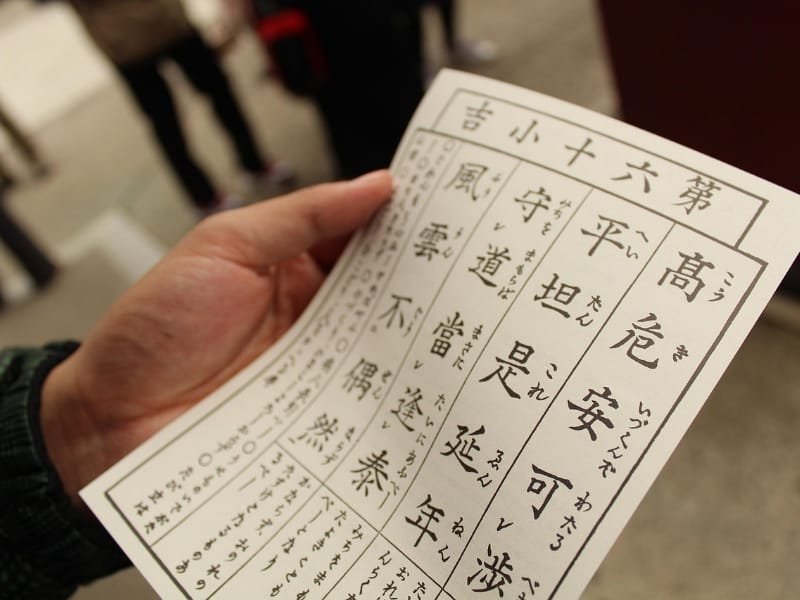
Buddhist Architecture Alive: Where Every Carving Tells a Story
Sensoji’s design is a textbook of Japanese Buddhist architecture, but with playful twists. The asymmetrical roof tiles (heavier on the north side to withstand typhoon winds) mirror the uneven path to enlightenment. The main hall’s floorboards were deliberately left unoiled so pilgrims’ footsteps would polish them over centuries—today, they gleam like amber. Even the dragon-shaped rain gutters have a purpose: their mouths gush water during storms, symbolizing the Buddha’s teachings “flooding” the world. Modern touches blend seamlessly: LED lanterns shaped like Edo-era paper ones, earthquake-resistant joints hidden behind carvings of lotus flowers. But the most moving detail? The tiny frog carvings (kaeru) near the pagoda’s base—a pun on the Japanese word for “return,” placed there so visitors will come back.
Omikuji & Incense Rituals: Decoding the Divine
At Sensoji, even fortune-telling is an art form. For ¥100, shake a metal cylinder until a numbered stick (omikuji) tumbles out—then match it to a drawer revealing your fate. Daikichi (great luck)? Tuck it in your wallet as a charm. Kyo (bad luck)? Tie it to a designated rack so the wind carries misfortune away. Nearby, the giant incense cauldron (jokoro) swirls with fragrant smoke. Locals “bathe” in it—wafting smoke over sore shoulders (for healing) or bowed heads (for wisdom). Pro tip: The incense burns 24/7, so visit late at night for a private moment with the gods.
Nakamise Shopping Street: A Taste of Edo’s Marketplace
This 250-meter alley has been serving pilgrims since 1688. Today, it’s a sensory overload of hand-painted kokeshi dolls, gold-leaf matcha crackers, and Edo-style folding fans. Must-try snacks:
- Ningyo-yaki: Fish-shaped cakes filled with red bean paste (¥300)
- Kibi dango: Sticky millet dumplings on bamboo skewers (¥200)
- Asakusa menchi: Juicy deep-fried meat croquettes (¥250)
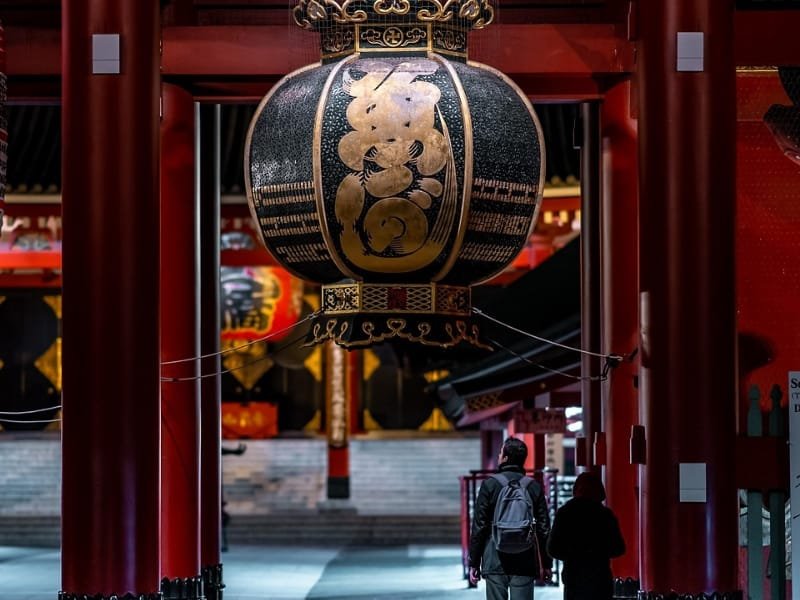
Look for stall #45—their hand-hammered copper charms are blessed by monks. Cash is king here; many vendors don’t accept cards.
Kimono Time Travel: Dress Like an Edo Local
Several shops near Kaminarimon rent kimono sets (¥3,500–6,000) for 2–4 hours, including obi ties and geta sandals. Kimono Rental Asakusa Aiwafuku even offers Taisho-era Western-style kimono for a vintage twist. Photographers cluster around the Hozomon gate’s red stairs and pagoda’s golden reflections—prime spots for Instagram magic. Bonus: Wearing kimono grants free entry to some normally paid temple areas.
Sanja Matsuri: When the Temple Explodes in Color (May 17–19)
Tokyo’s wildest festival sees 2 million visitors cram into Asakusa for three days of portable shrine (mikoshi) parades, taiko drum battles, and geisha dances. The highlight? Teams of loincloth-clad men hoisting 1-ton mikoshi while chanting “Sōiya! Sōiya!”—their sweat-slicked bodies gliding through crowds like human rivers. Arrive by 6 AM to snag a curb spot, or book a balcony view at Asakusa View Hotel.
Hatsumōde: New Year’s Under a Million Wishes
From December 31 to January 3, Sensoji hosts 3+ million visitors for hatsumōde (first shrine visit). The atmosphere crackles with roasted sweet potatoes (yakiimo) vendors, golden arrow charms for luck, and the 106th bell strike at midnight—said to purify 108 human sins. Temple maids sell amazake (sweet sake) to ward off the cold. Come after 3 AM on January 1 to avoid the worst crowds.
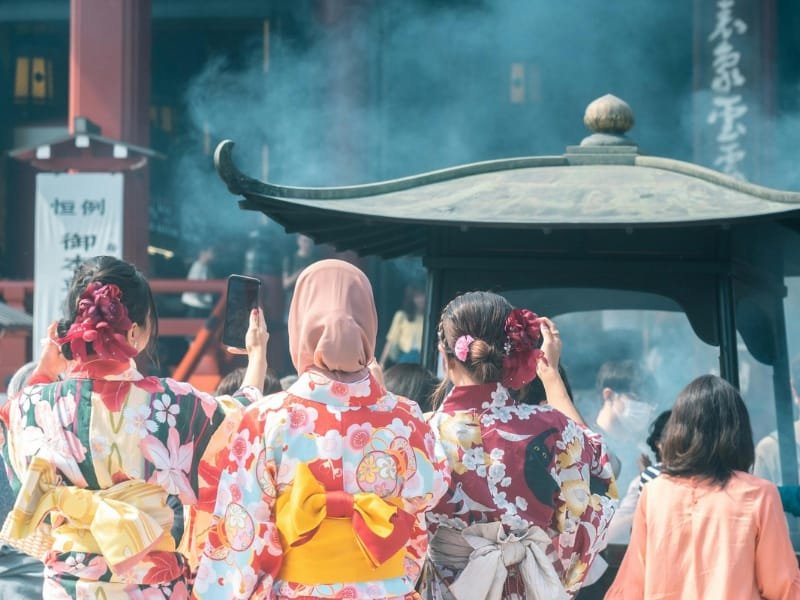
Seasonal Secrets: Lanterns, Leaves & Quiet Magic
- July: Toro Nagashi – Paper lanterns float down Sumida River
- November: Autumn Illuminations – Pagoda framed by fiery maple leaves
- Weekday Mornings (6 AM) – Watch monks polish the main hall’s floors
Local Hack: The temple’s west garden stays nearly empty even during peak hours—its stone Buddha statue makes a serene photo backdrop.
Navigating to Sensoji Temple: Your Seamless Journey to Old Tokyo
Reaching Sensoji Temple is an adventure through Tokyo’s layered history. The closest station is Asakusa Station, served by the Ginza Subway Line (G19), Tobu Skytree Line, and Tsukuba Express. Exit via A4 for a dramatic reveal of Kaminarimon Gate just 200 meters ahead—the giant red lantern emerging between souvenir shops feels like stepping into an Edo-period woodblock print. For a scenic approach, take the Tokyo Water Bus from Hamarikyu Gardens or Odaiba, disembarking at Asakusa Pier for a riverside stroll past the Sumida River fireworks launch sites. Pro tip: Avoid rush hour (8–9:30 AM) when salarymen flood the Ginza Line; instead, visit mid-morning when street performers begin animating Nakamise-dori. Google Maps’ live crowd feature shows real-time pedestrian traffic—check before heading out.
▶ Tokyo Subway Map | ▶ Water Bus Schedule
Temple Etiquette: Blending In Like a Local
While Sensoji welcomes all, respecting traditions unlocks deeper experiences. Before entering the main hall:
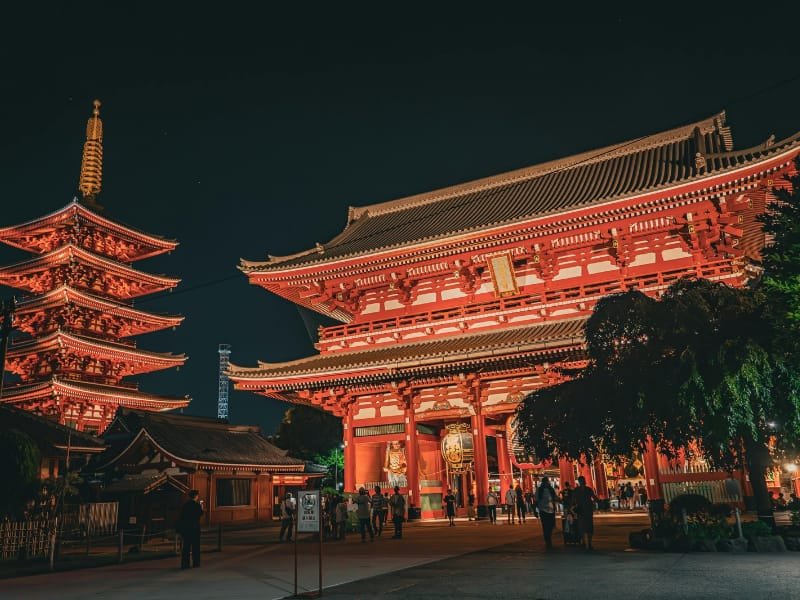
- Purify at the temizuya (water pavilion):
- Hold the ladle in your right hand, pour water over your left
- Switch hands to rinse your right
- Cup left hand to rinse your mouth (spit discreetly beside the basin)
- Tilt the ladle vertically to cleanse the handle
- Offer coins at the saisen-bako (offertory box):
- Toss a 5-yen coin (considered lucky—”go-en” sounds like “fateful connection”)
- Bow twice, clap twice, pray silently, then bow once more
- Incense ritual:
- Buy a bundle (senko, ¥100) from the booth near the cauldron
- Light it (let others borrow your flame—it’s good karma)
- Wave smoke toward ailments (no blowing—it’s rude to the gods)
Avoid these missteps:
✖ Pointing at statues (use an open palm)
✖ Eating while walking through temple grounds
✖ Photography inside the main hall (the inner sanctum is strictly forbidden)
Practical Essentials: Free Access with Hidden Perks
Sensoji’s main precinct is always open, with the main hall accessible 6:00 AM–5:00 PM (Oct–Mar) / 6:00 AM–6:00 PM (Apr–Sep). While entry is free, these paid options enhance your visit:
- Treasure House Gallery (¥300): Displays Heian-era sutras
- Morning chanting sessions (¥1,000): Join monks at 6:30 AM
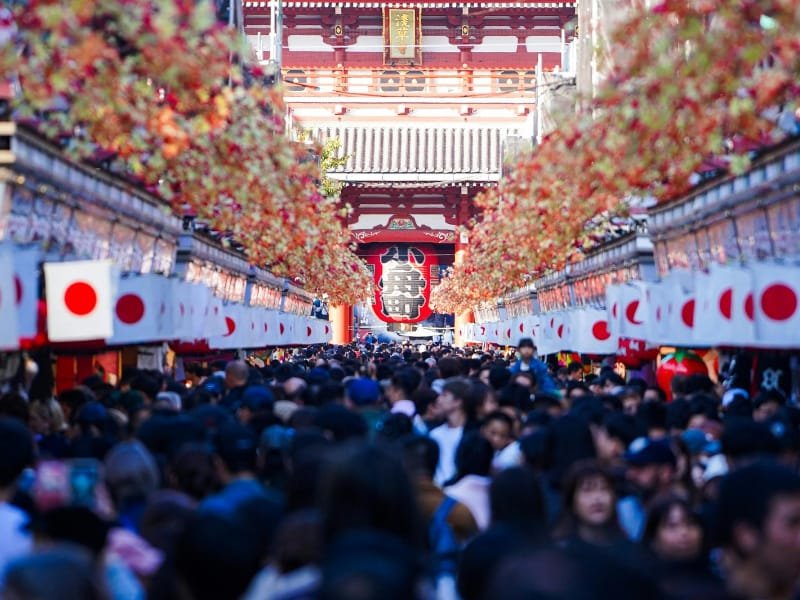
Nearby amenities:
- Coin lockers: Asakusa Station (¥300–500/day)
- Free Wi-Fi: Available at the Tourist Info Center near Kaminarimon
- Prayer items: Buy ema (wish plaques, ¥500) at stalls—the golden thunderbolt design wards off misfortune
Pro tip: The Asakusa Culture Tourist Information Center (2-min walk) has an 8th-floor free observatory with breathtaking temple views.
Global Accessibility: Comfort for Every Traveler
Sensoji accommodates international visitors thoughtfully:
- Multilingual signs: English, Chinese, Korean translations at key points
- Wheelchair access: Ramps lead to the main hall (borrow chairs at the security booth)
- Prayer guides: Scan QR codes for narrated rituals in 12 languages
- Currency exchange: Nakamise-dori’s Mizuho Bank ATM accepts foreign cards
Cultural bridge: Temple staff wear color-coded sashes indicating languages spoken—look for:
🔴 Red = English
🔵 Blue = Mandarin
🟢 Green = Spanish
Caution: The gravel paths can challenge strollers/wheelchairs after rain.
Capturing the Perfect Shot: Light, Angles & Secrets
Golden hours:
🌅 Sunrise (5–6:30 AM): The Hozomon gate glows crimson against dawn’s soft light
🌇 Sunset (seasonal): Position near the five-story pagoda to silhouette it against Tokyo Skytree
Iconic frames:
📸 Kaminarimon close-up: Shoot from the left side to include the giant waraji sandals
📸 Nakamise-dori overhead: The 2nd-floor Starbucks offers a bird’s-eye view
📸 Reflection shots: Puddle photography after rains (best near the Demboin Garden gate)
Crowd hacks:
- Weekday evenings: After 7 PM, the temple is 80% emptier
- Rainy days: Umbrellas add moody reflections (buy clear ones at ¥300 from street vendors)
Forbidden magic: The temple turns off security cameras during Sanja Matsuri—the only time you can photograph the inner gate at night unfettered.
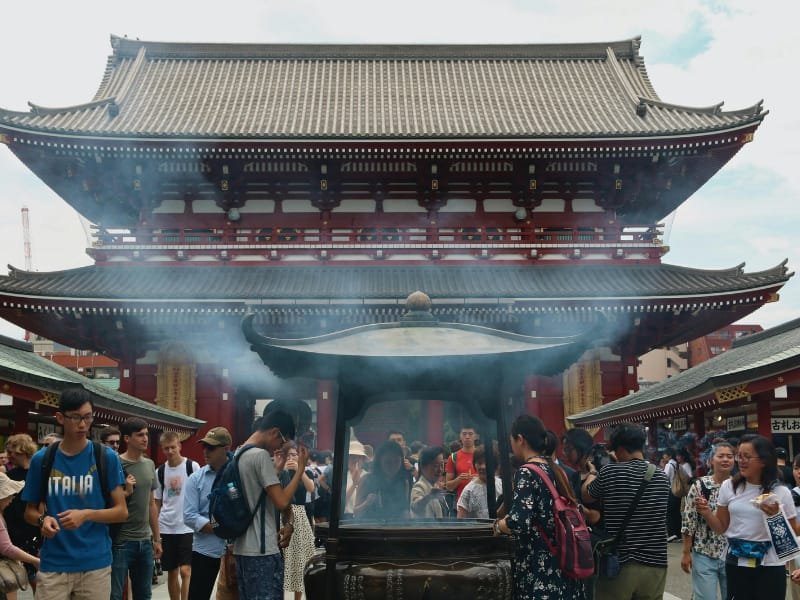
Sensoji Temple FAQs: Your Personal Guide to Tokyo’s Timeless Treasure
1. Is Sensoji Temple free to enter?
✅ Yes! The temple grounds and main hall are completely free 24/7. Optional paid experiences include:
- Omikuji fortunes: ¥100
- Incense bundles: ¥100
- Treasure Gallery: ¥300
Pro tip: Toss a 5-yen coin (go-en) into the offertory box—it’s considered lucky!
2. How much time should I budget?
⏳ 60–90 minutes covers the essentials:
- 15 mins: Kaminarimon & Nakamise-dori
- 20 mins: Main hall rituals & incense
- 10 mins: Omikuji fortune
- 15+ mins: Exploring hidden corners like Demboin Garden
Add 30+ minutes if renting a kimono or joining a guided tour.
3. Can I visit at night?
🌙 Yes—but with a twist! While the grounds stay open, the main hall closes at 5:00 PM (Oct-Mar) / 6:00 PM (Apr-Sep). Night highlights:
- Illuminated pagoda (until 11 PM)
- Quiet incense cauldron (fewer crowds)
- Stunning lantern photos at Kaminarimon
Best-kept secret: The temple is most magical during Sanja Matsuri (May), when it stays lively past midnight.
4. What’s the best time to avoid crowds?
🕗 Early bird wins! Arrive at:
- 6:00–7:30 AM: Monk chanting sessions, empty photo ops
- Weekday afternoons: Fewer tour groups
- Rainy days: 60% fewer visitors (grab a clear umbrella for photos!)
Avoid weekends & Japanese holidays—especially during cherry blossom season.
5. Is there a dress code?
👘 No strict rules, but respectful attire is appreciated:
- Covered shoulders/knees (shawls available for ¥200)
- Remove hats inside the main hall
- Kimono rentals nearby (¥3,500–6,000 for 2–4 hours)
Locals say the gods favor visitors in red accents—try a scarlet scarf!
6. Can I take photos?
📸 Mostly yes, but:
- ✅ Outdoor areas: Gates, pagoda, Nakamise-dori
- ❌ Main hall interior: Strictly prohibited
- 🤫 Monks in prayer: Ask silently before snapping
Pro shot: The Hozomon stairs at sunset frame perfect silhouette photos.
7. Are there English guides?
🗣 Yes! Options include:
- Free QR code audio guides at the entrance
- Volunteer guides (10 AM–2 PM, look for blue sashes)
- Asakusa Tourist Info Center (brochures in 15 languages)
Download the “Sensoji AR” app to see Edo-period overlays on your phone!
8. What’s the #1 thing locals do here?
🙏 Omikuji + Incense = Ultimate Purification Combo:
- Shake the metal can for a fortune slip (¥100)
- If “bad luck,” tie it to the rack near the pagoda
- Light incense & bathe in the smoke (head → shoulders → knees)
80% of visitors miss the hidden frog carvings—find them for good luck
▶ Official Sensoji Website | ▶ Live Crowd Tracker

Sensoji Temple: Where Every Stone Whispers a Story
There’s a reason Sensoji has stood for over 1,400 years—it’s not just a temple, but a living scrapbook of Tokyo’s soul. As you walk back through Kaminarimon Gate after your visit, you’ll notice something unexpected: the modern skyscrapers of Asakusa suddenly feel out of place. That’s the magic of this sacred space—it doesn’t just preserve history, it erases centuries in a single incense-scented breath. I’ll never forget watching a teenage girl in Harajuku streetwear carefully tie her “bad luck” omikuji to the rack, then burst into giggles with friends over matcha soft serve. Or the elderly man who bowed so deeply before the main hall that his forehead nearly touched the sun-warmed stone. These aren’t tourist moments—they’re human rituals connecting Edo to the digital age. The temple’s genius lies in how it lets you be both spectator and participant: toss a coin like a pilgrim, pose like an influencer under the pagoda, then suddenly find yourself holding your breath as dawn light hits the golden Kannon statue (yes, you can glimpse it during special morning ceremonies). This is where Tokyo’s heartbeat slows just enough to feel its ancient rhythm beneath the neon.
Your Invitation to Time Travel
Now it’s your turn to add to Sensoji’s story. Come for the Instagram shots, but stay for the goosebump moments—when the temple cat brushes your leg during evening prayers, or when you realize the incense smoke curling around you carries the same cedar scent that samurai inhaled. Book that kimono rental (the rustle of silk up stone stairs is unforgettable), taste the charcoal-grilled mitarashi dango at Nakamise’s oldest stall (#37), then challenge yourself to find the hidden stone frog near the five-story pagoda. And when you toss your 5-yen coin into the saisen-bako, make it a double wish—one for yourself, and one for this sacred ground that keeps Tokyo tethered to its past.
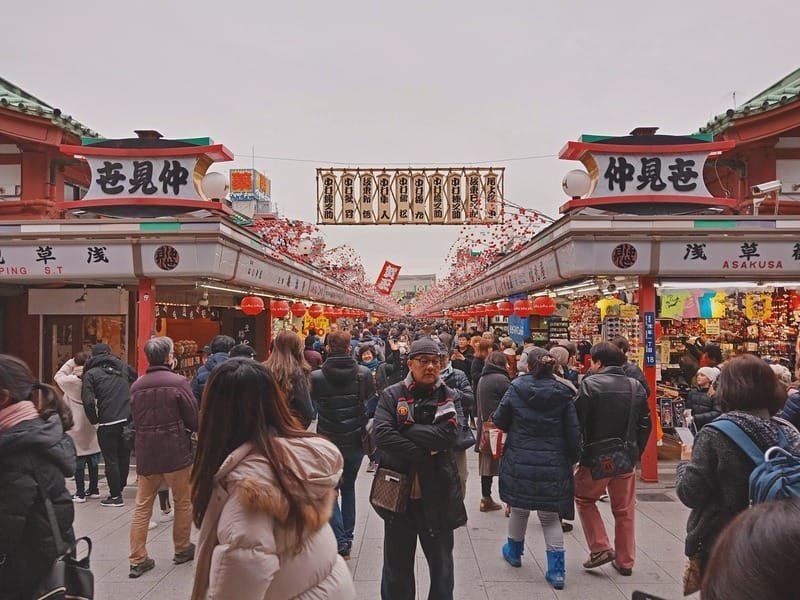
Last Call: Light a senko incense bundle at sunset tonight—wherever you are—and let the scent carry your thoughts to Asakusa. Then comment below with:
🌅 Your wish for Sensoji (we’ll add it to our digital ema wall)
📸 Your favorite temple photo spot (we’re mapping global perspectives)
(P.S. Left something behind? The temple’s lost & found keeps items for 100 days—even half-burned wishes from the incense cauldron.) 🏮
